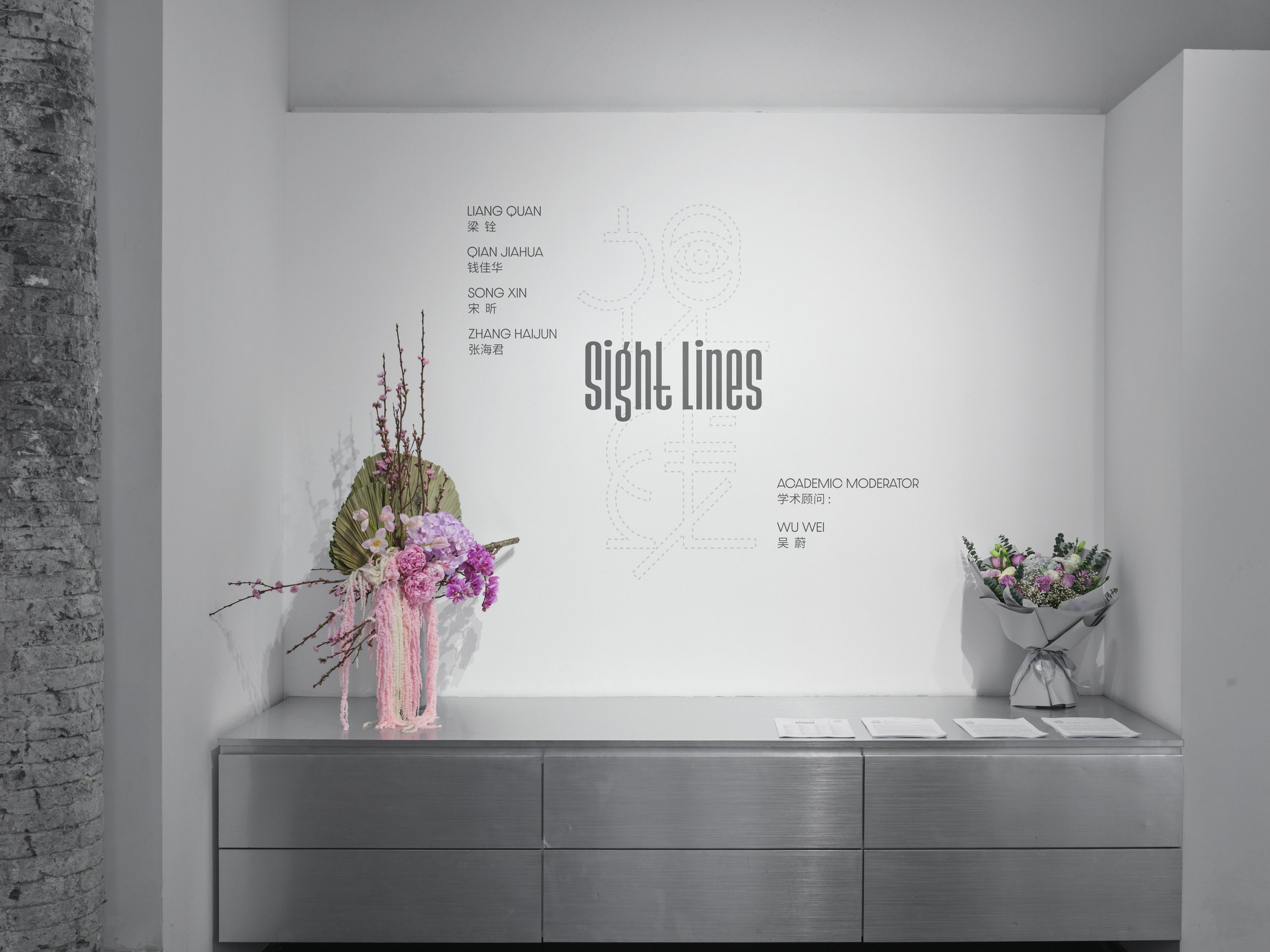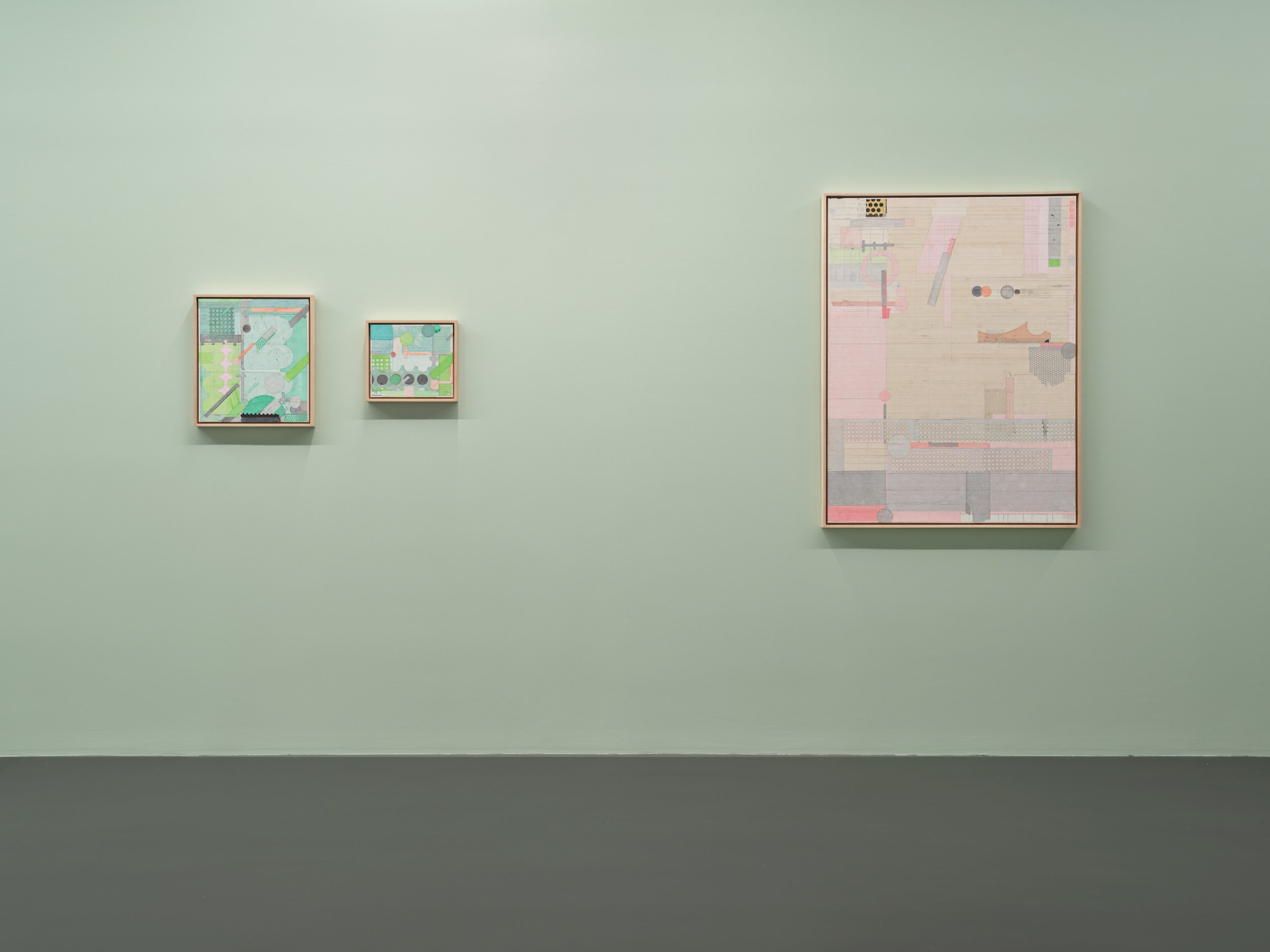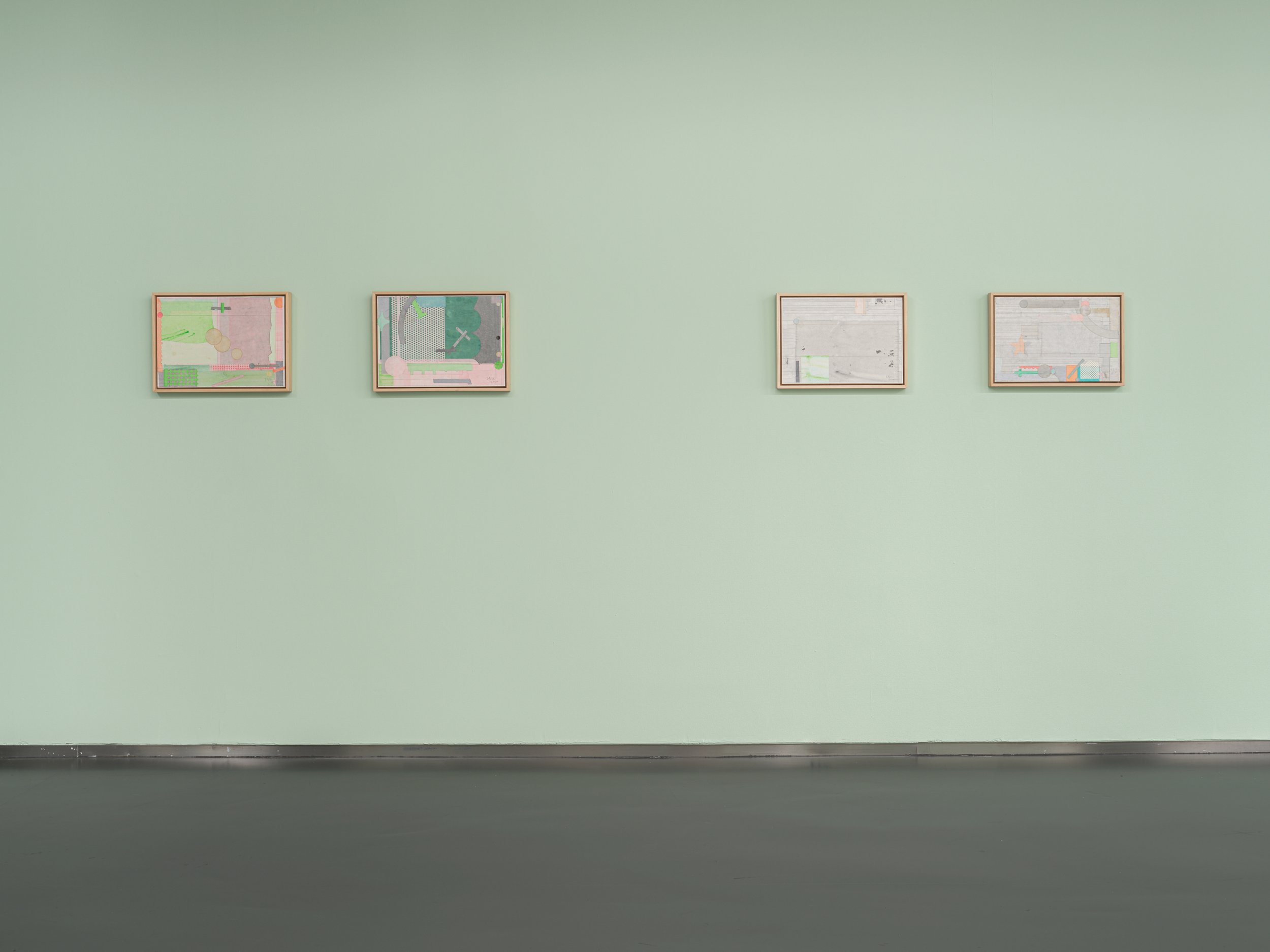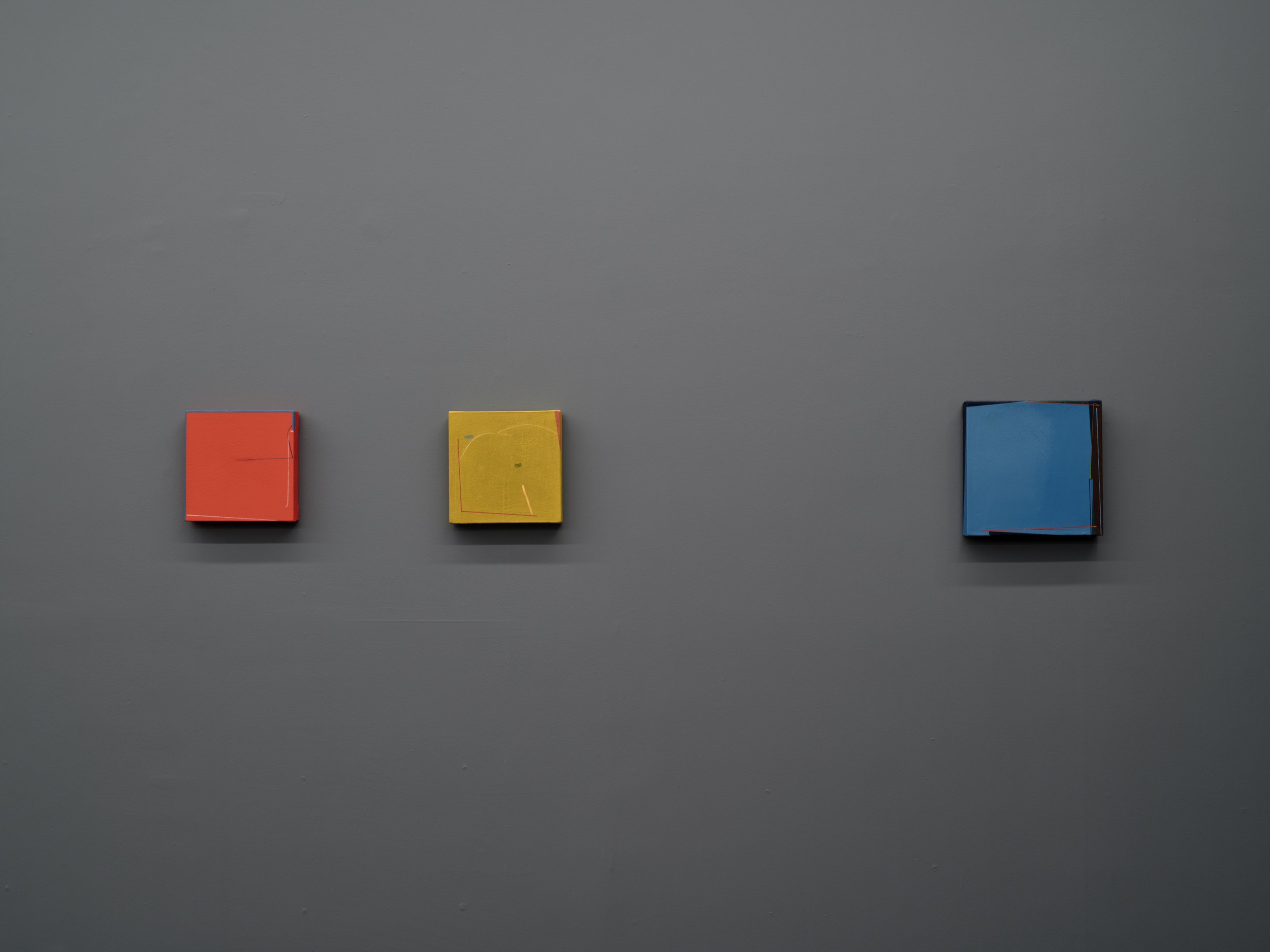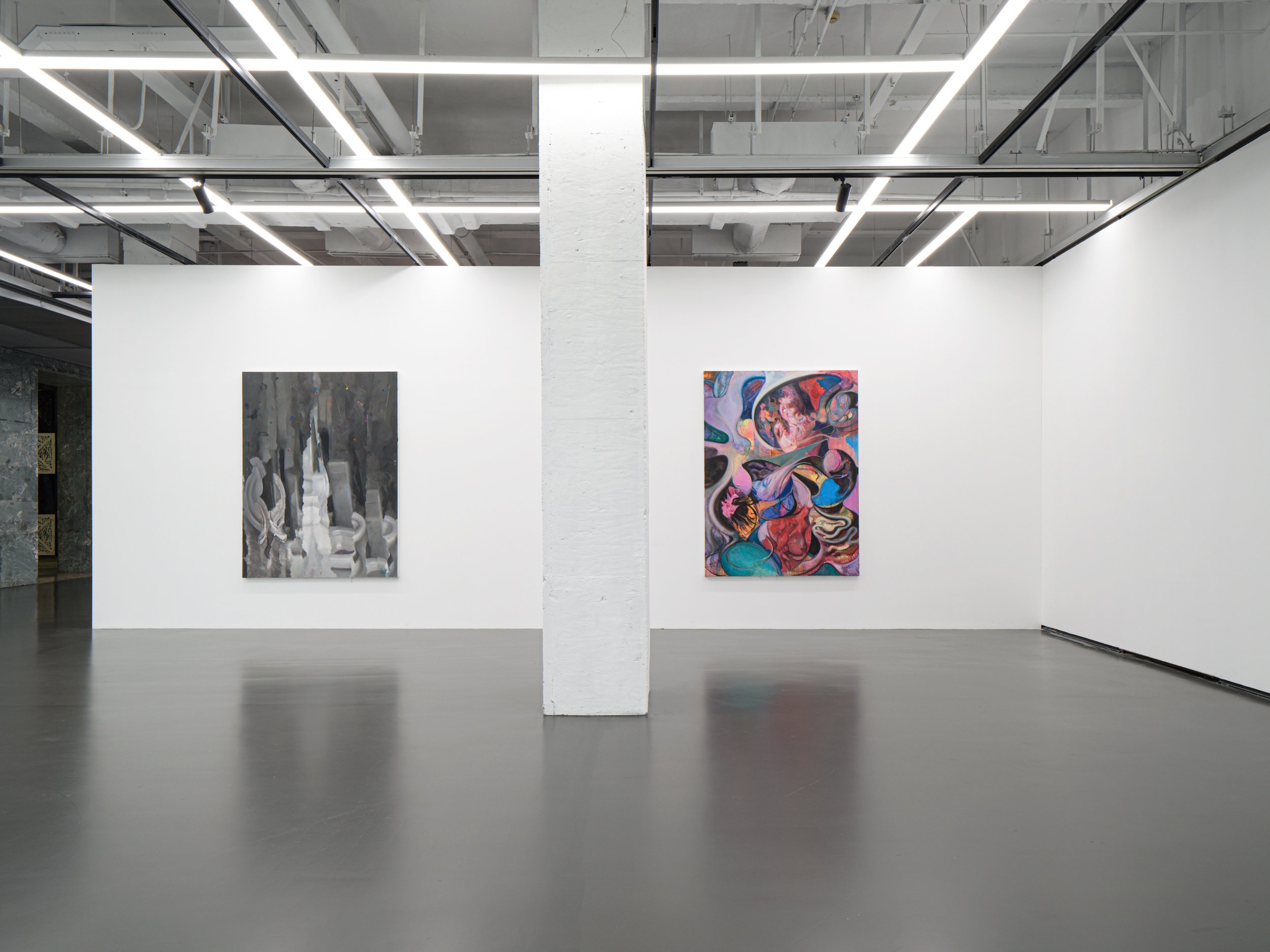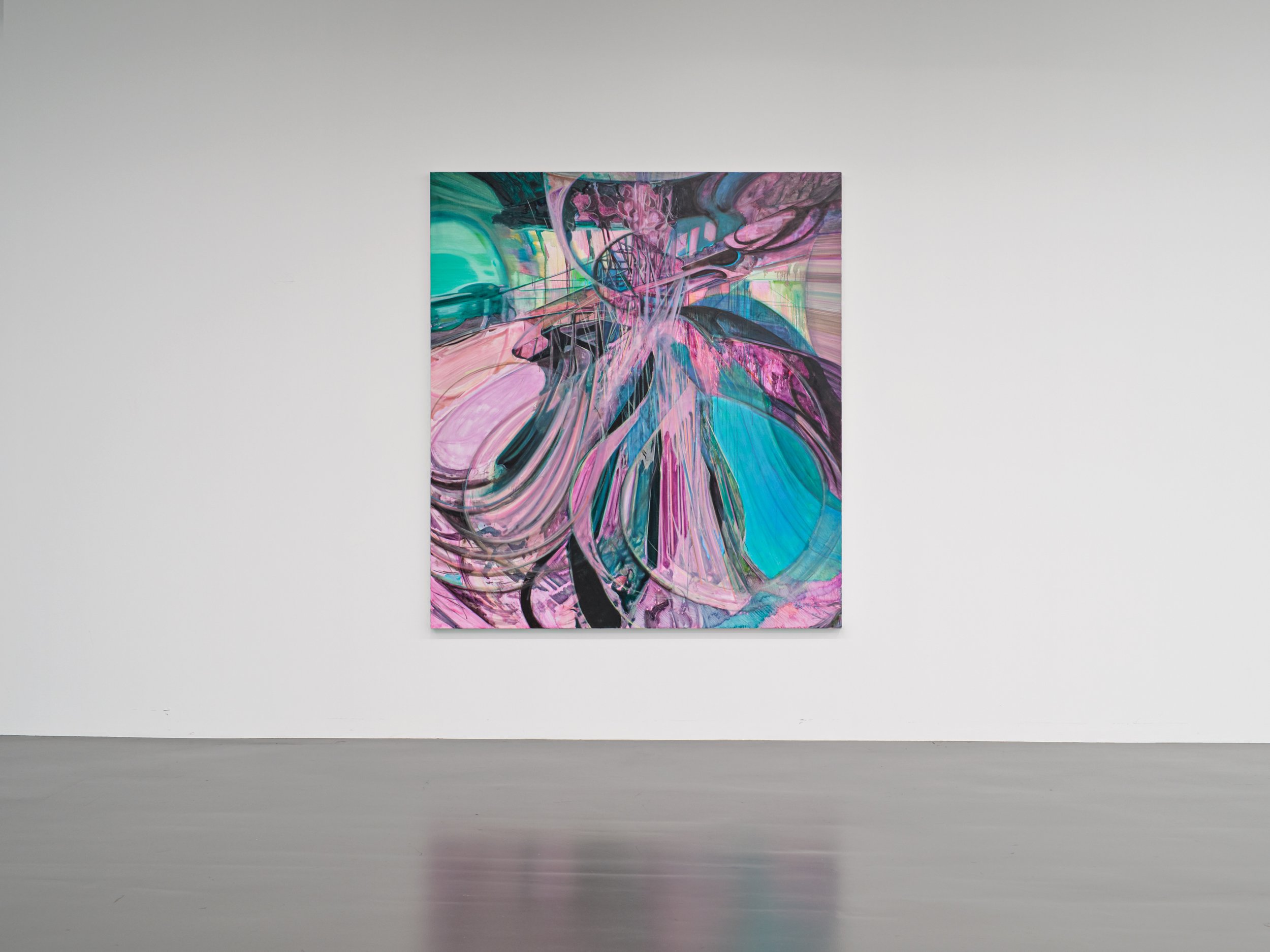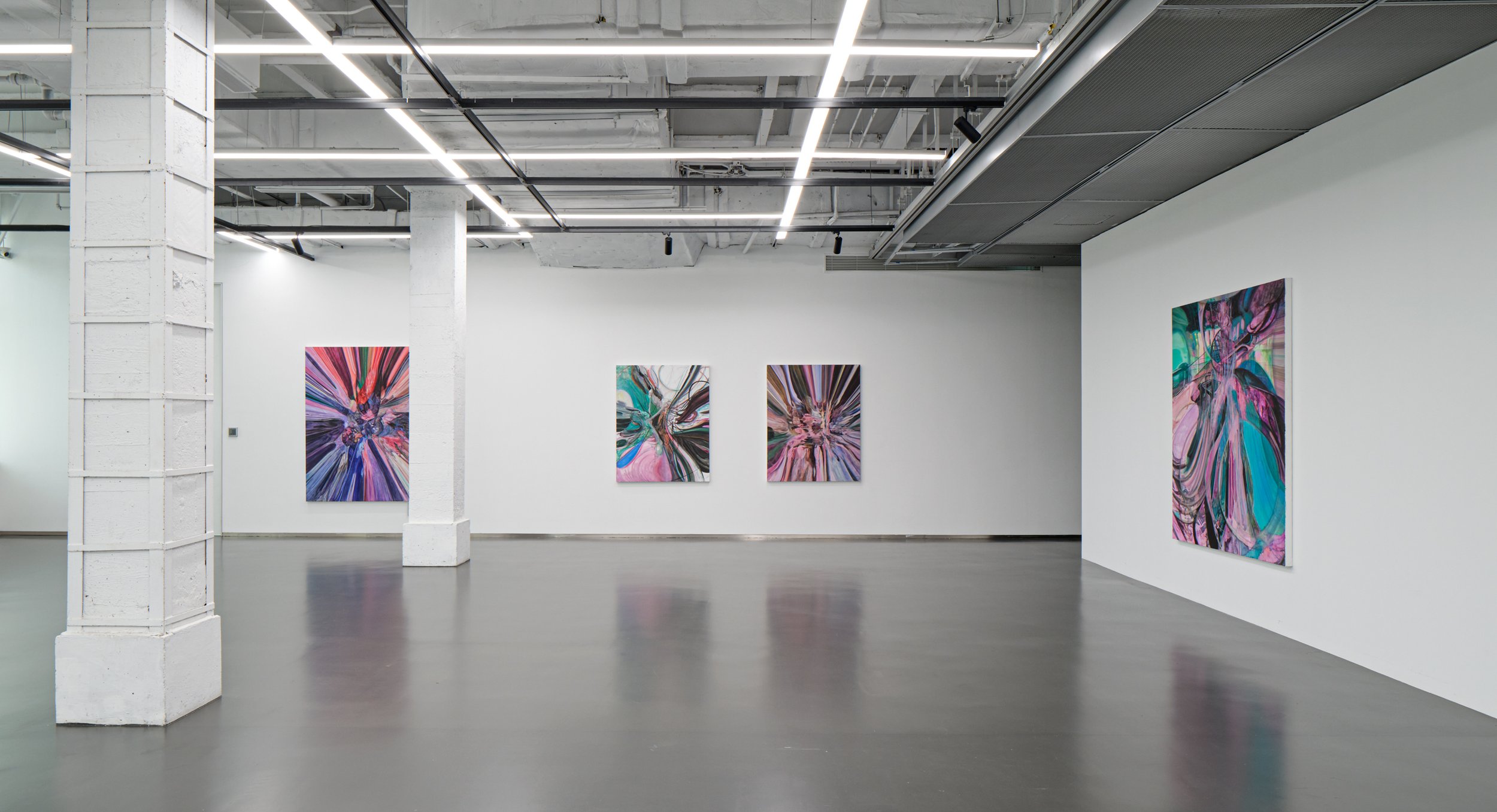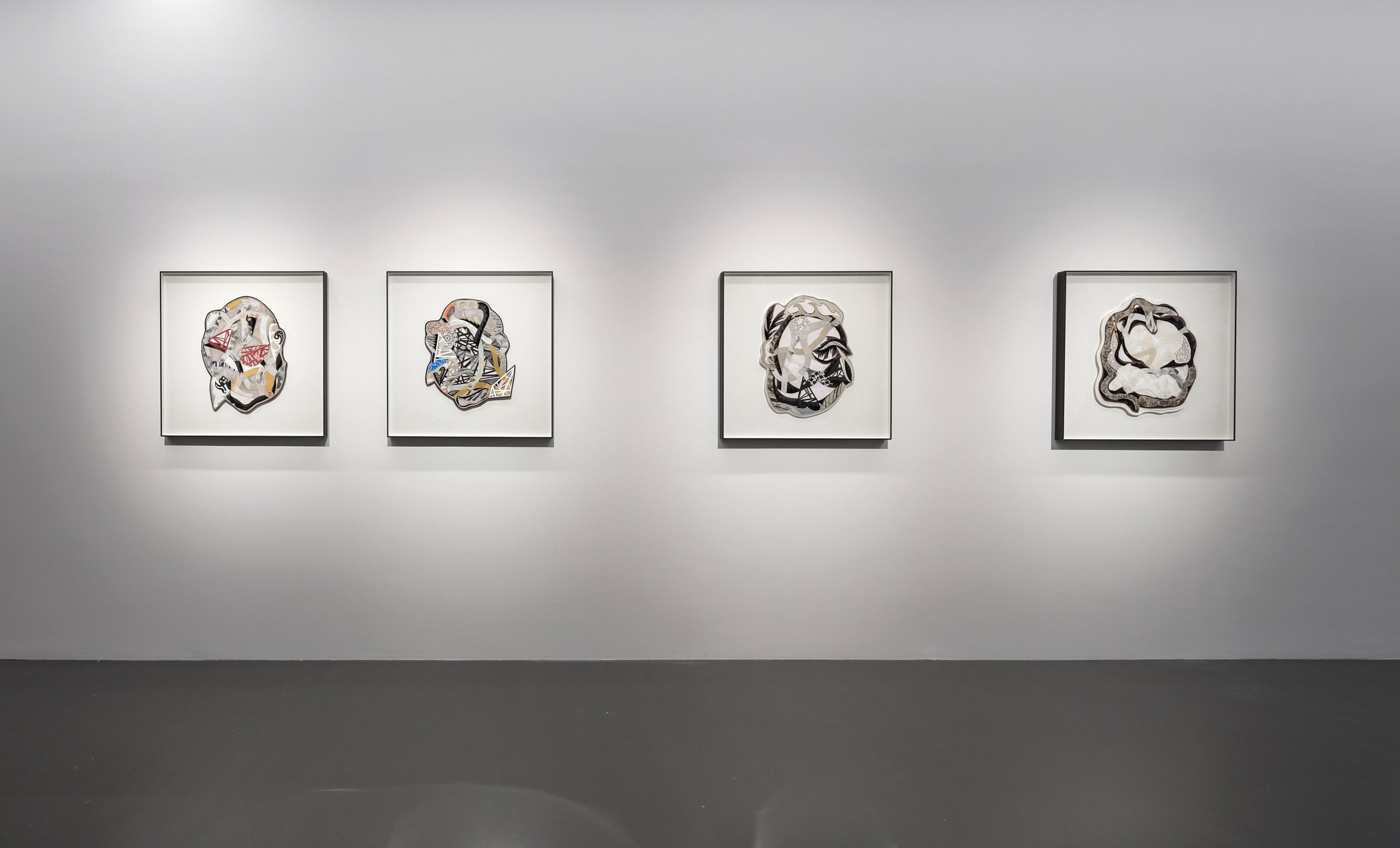Exhibition
8 April - 4 June 2023
Venue
SGA Three on the Bund, 3F, No.3 Zhong Shan Dong Yi Road, Shanghai
Artists
Liang Quan, Qian Jiahua, Song Xin, Zhang Haijun
Academic Moderator
Wu Wei
▃
This April, Space and Gallery Association Shanghai is pleased to present Sight Lines–– a group exhibition that brings together four exceptional Chinese contemporary artists: Liang Quan, Qian Jiahua, Song Xin and Zhang Haijun, through a range of media including painting, collage, installation and other works on paper. The gallery also invites Chinese art critic and independent curator Wu Wei as the academic advisor for this presentation. The exhibition is on view from Saturday, 7th April, through 4th June 2023.
Marking the foundation for cognition and thought, our sight is central to how we perceive the world. "Sight Lines" brings in a wider horizon to the theme of 'sight', not only as a sensory perception of objective things and phenomena, but also as a creative capacity to construct something new. The works on view arise from a culmination of objects observed and depicted through the eyes of four different artists. In dazzlingly idiosyncratic ways, the works revise, expand and transform our orthodox visual experiences, and lead us to establish new understanding, perception and imagination to our existing surroundings.
American psychologist James J. Gibson's (1904 - 1979) wrote in his Theory of Visual Perception that the raw material of perception is not sensorial data but environmental information. In other words, the brain completes the picture vision of what we see, not the eyes. As reflected in the presented works, these artists address the notion of line and abstraction by recording perceptual fluctuations and transience through their brush rather than a mimetic transmission of images received by their retina. Here, line––one of painting’s most irreducable elements––is both a stream of thought and a reflection of spiritual condition. These paintings do not share a common experience with the audience, i.e., they do not seek to evoke a form of recognisable perspective or experience from their audience. They carry a level of intimacy stemmed from the artist's personal experience and reveal to us something inimitable. They can surprise, befuddle, tug on our heartstrings, or/and open our eyes. They endow us with an understanding that some works require a long, contemplative gaze, and that our subconscious emotions require us to internalise the path of seeing into a meditative reflection.
The challenge with abstract art is that it can never be neatly categorised in general terms as a pure art form. For one, it is related to the experience of the real world. In this exhibition, abstraction does not circumscribe to an absolute void/nothingness where everything dissipates without a trace, it is featured as a dynamic art form, and quintessentially, a fervent existence.
▃
Marking the line of sight
//Wu Wei
Marking the foundation for cognition and thought, our sight is central to how we perceive the world. The upcoming exhibition "Sight Lines" brings in a wider horizon to the theme of 'sight', not only as a sensory perception of objective things and phenomena, but also as a creative capacity to construct something new. The works on view arise from a culmination of objects observed and depicted through the eyes of four artists. As subjective and individualised entities, they revise, expand and transform our orthodox visual experiences, thereby leading us to understand, recognise, re-perceive and re-imagine our existing surroundings.
American psychologist James J. Gibson's (1904 - 1979) wrote in his Theory of Visual Perception that the raw material of perception is not sensorial data but environmental information. In other words, the brain completes the picture vision of what we see, not the eyes. Here, the presented works address the notion of line and abstraction, recording perceptual fluctuations and transience through their brush rather than a mimetic transmission of images received by their retina. An essential element in painting, line is both a stream of thought and a reflection of spiritual condition. These paintings do not share a common experience with the audience, i.e., they do not seek to evoke a form of recognisable perspective or experience from their audience. They carry a level of intimacy stemmed from the artist's personal experience and reveal to us something inimitable. They can surprise, befuddle, tug on our heartstrings, or/and open our eyes. They endow us with an understanding that some works require a long, contemplative gaze, and that our subconscious emotions require us to internalise the path of seeing into a meditative reflection.
For a talented painter, the challenge is not about achieving a particular visual outcome, but avoiding settling too immediately or comfortably with one preferred effect. One always needs to source for new artistic ventures, set obstacles, formulate formulas, and make the creative process stimulating. Such exemplary is found in artist Liang Quan. As someone who actively looks ahead, Liang's art is a seamless blend of his artistic intuition and philosophical ideologies. In terms of method, Liang creates by re-assembling shredded rice paper fragments and dividing his composition into geometric forms. Strictly speaking, the accurate rendering of texture or coloured paper with Chinese ink is not Liang's primary goal. Instead, his focus resides in the conceptual articulation of layering, combination, movement and spatial distance onto paper, pursuing to balance formal freedom on the grounds of structural painting. The juxtaposition between the frailness of rice paper and the stability of his pictorial composition exudes mesmerising tension. And while his works appear chiefly abstract–– with un-prescriptive complexity and contradiction–– they convey a complete and immersive visual and psychological experience that honours great traditions throughout history. Happenstance or not, these lines and folds, which peek along the perimeters of his paper creates a looping timeline that links us between the past and the present.
In Qian Jiahua's paintings, lines form contours, shapes, images, and objects. While her works may draw parallels to the characteristics of Colour Field painting, they belong to the artist's graphic interpretation of the world through her eyes. Sometimes, her varying red, orange, yellow or green fields act as fillers that create structural support for her lines. Look again, and their function switches to that of a hinge that opens to the next room, an implication of the brewing momentum lodged beneath each layer. Here, we see a gamut of hard-edge colour planes readily permutated into stripes, blocks, and lanes, all harmoniously co-existing in a flat, abstract composition. Qian’s paintings are a multifaceted continuation of deformations or reformations that plays into a promise: what you see may or may not be what you get. Essentially, her economy of coloured forms takes on a subtle, dynamic illusion that idiomatically reflects our external reality.
From her paper cuts to her brushwork of interweaving lines and the interstice of textures and patterns, Song Xin's visual expression brims with a seemingly primitive but immaculately constructed aesthetic appeal. The artist’s "Wave" series, 2021, named after the Chinese character "水" water, comprises biomorphic portraits of the brain and can be seen as a stylistic nod to Cubism. As they simultaneously overlay and disrupt the composition's overall spatial consistency, these pieces are reminiscent of our human mind–– a tangled labyrinth of endless desires and melancholia. As Song intuitively and emotionally demonstrated in her on-site installation "Extension", the versatility of paper transcends beyond its physical properties as a medium or material. For her, it is a vital component in her life and the locus of her artistic vision. Through paper, she can mould life to form at will.
In Zhang Haijun's paintings, we can see his interest in the way images interact with our surrounding world. The unusualness captured in each composition reveals the artist’s fascination with a realm that extends beyond the canvas, and the relationship between colour and form. His visual language slides effortlessly between abstraction and figuration with influences from previous expressionist and constructivist periods. Each piece is emotionally charged, trailed in blinding yellows and burning collisions of crimson and orange, often resembling the physical phenomena of bodily outbursts and struggles. With a stream of gnarly, distorted lines, Zhang guides the audience onto an indescribable path of visual exploration.
The challenge with abstract art is that it can never be neatly categorised in general terms as a pure art form. For one, it is related to the experience of the real world. In this exhibition, abstraction does not circumscribe to an absolute void/nothingness where everything dissipates without a trace, it is featured as a dynamic art form, and quintessentially, a fervent existence.
About the moderator
Wu Wei is an art critic and curator. She is currently the associate editor of “Art China” magazine and “Public Art Journal”. Her previous curatorial projects include, “Next Festival”; “Li Jinghu: One Day in Dongguan”; “Jia Aili: Good Morning, World”; “Shanghai Surprise: A Group Show on Contemporary Art in Shanghai”; “In No Hurry: Qi Lan Solo Exhibition” ; “A Turning Moment: Urban Narratives in Chinese Contemporary Art, 1995-2019”; and other notable contemporary art exhibitions. She is also the co-curator of a series of books on public art research(公共艺术研究丛书).
▃
About the artists
Liang Quan(1948, Shanghai, China)
Studied at the Affiliated High School of the Zhejiang Academy of Fine Art and printmaking in the San Francisco Art Institute, USA. Previously, he taught in the printmaking department of Zhejiang Academy of Fine Art (now the China Academy of Art, Hangzhou) and worked at Shenzhen Fine Art Institute. He is now retired and currently lives in Shenzhen. Liang Quan is one of the pioneer artists in China who combines traditional Chinese ink painting with abstraction. Often combining collage of mixed materials liken to Western abstract art with traditional Chinese ink to construct an authentic expression that marries the aesthetic language of both East and West. Liang Quan’s work has been widely exhibited and collected throughout the world. His major international exhibitions include, “LA GRANDE ASTRAZIONE CELESTE” curated by Achille Bonito Oliva, the artistic director of the Venice biennale; Sydney Biennale, and more. A selection of his solo shows includes, the University of San Francisco, USA; Mies van Der Rohe Haus, Germany; Kunst House in Nürnberg, Germany, and other organisations. His works are in the permanent collections of the National Art Museum of China; the Guangdong Museum of Art, the Zhejiang Art Museum; the Hong Kong Art Museum; Hong Kong M+; the British Museum, the Shanghai Art Museum, the University of San Francisco; and other notable art organisations.
Qian Jiahua(1987, Shanghai, China)
Graduated from China Academy of Art in 2011, she currently works and resides in Shanghai. Qian Jiahua’s practice primarily focuses on the dynamics of the painting process as a way of rendering images. For the artist, to paint is to record a body’s capacity to express in visual clarity, to distil the materiality of the medium and to re-evaluate the relationship between painting and image. Favouring to work slowly and tactfully from an inexplicable perspective, Qian endeavours to soothe the inherent exhaustion and wear our perceptual senses underwent in face of frenzied computer systems. Above all, she seeks to erase the terminological boundaries between abstraction and figuration, aesthetics and design. Qian’s work has exhibited in Powerlong Musuem Shanghai; Chi K11 Shanghai; Nanjing Golden Eagle Contemporary Art Center; White Cube London, UK; and more.
Song Xin(1970s, Beijing, China)
Graduated from the department of folk art at the China Central Academy of Fine Arts in 1994, Song Xin previously taught at Stony Brook University, University of South Florida, SUNY College at Old Westbury, Hampshire College, Hunter college, and has led workshops on Chinese papercut and shadow puppet for cultural institutions and schools since 2001. She currently resides in New York. Song has created numerous installations in public spaces, including: “Five Elements” for the Fashion District’s Broadway Boulevard Plaza in collaboration with the Manhattan Borough, NY; “Tree of Life” at the Bay Parkway Landmark Station, D Line in Brooklyn, NY; “ On Paper” for Grand Central’s 100 Anniversary Celebration, NY; and “The World Garden” at Ps170k public school lobby in Brooklyn, NY. Notable exhibitions include: the Today Art Museum, Beijing, China, 2020; the Rampa Art Center, Porto Portugal, 2022; Chengdu Biennale 2021, China; the Contemporary Art Museum of Crete 2018, Rethymnon, Greece; Venice Biennial 2017; the Noyes Museum of Art of New Jersey, 2017; Staten island museum 2016; Musée du Louvre, Paris, 2014 ; and more.
Zhang Haijun (1977, Liaoning, China)
Graduated M.A. from oil painting department, first studio (neoclassicism) at the Lu Xun Academy of Fine Arts, China. He currently teaches at the school of painting in Lu Xun Academy of Fine Arts. In his recent works, Zhang Haijun’s focus gradually evolves from temporal to spatial exploration. yet his creative philosophy remains constant. His paintings often allude to broken, anomalous forms jogged from an autobiographic standpoint as a way to mediate his memory, experience, habit and self. To him, painting’s particularity adheres to its indeterminable nature; whether abstract or figurative, every marking; every gesture mark as corporeal evidence of an artist’s own attempt to delineate an inner void. They are experimental records of the inner self, striving for a path toward higher spiritual world. Zhang Haijun’s work is housed in the collections of Shanghai Research Foundation, as well as international collectors. Selected exhibitions include China Art Museum, Shanghai; AIAA Arts Fair, Hongkong, Art Basel. Miami Beach, USA, and more.
▃
Gallery
Click here to download our exhibition catalogue.



